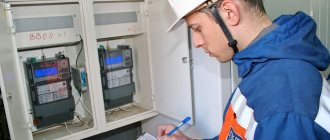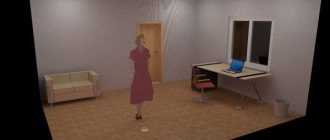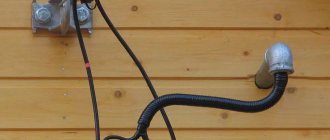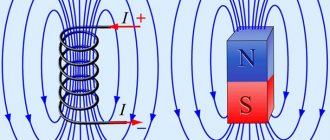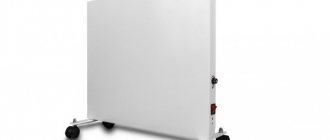The main point to pay attention to when working with any electrically powered equipment is safety. It is on this basis that a special classification of premises for electrical safety has been created. The quality of work performed by a person is influenced not only by skills, but also by the atmosphere in which the activity is carried out. If there are unpleasant gases or other impurities in the air, this will negatively affect performance. Additionally, the presence of vapors and high humidity in the air can dramatically increase the likelihood of electric shock from electrical equipment. Temperature indicators are also important.
Electrical Warning
Difference in working areas
In order to understand in more detail the degree of danger of electric shock, it is necessary to understand what kind of premises exist. There are three main categories of premises:
- Non-high hazard – these are work areas where there is no need to wear protective equipment, and there is no risk of electrical injury;
- High-risk areas are places where you need to wear special equipment for protection. There is a risk of receiving an electric shock from a certain device;
- Particularly dangerous areas are areas where only specialists wearing special protective equipment work. There is a high risk of getting an electric shock if safety rules are not followed.
Absolutely all premises used by a person in everyday life and work where electrical installations or any other electrical equipment are present are divided into such classes. The classification was created in order to minimize the risk of electric shock, since the likelihood of death if affected is quite high.
Important! Human life depends on compliance with safety precautions when staying in rooms with electrical equipment, therefore, when working with electrical installations, the established rules should not be neglected.
To study in more detail the level of danger of work in each individual work area, you should consider in more detail the classification of each room according to the danger of electric shock.
Classification of premises for electrical safety (PUE clause 1.1.13)
⇐ PreviousPage 3 of 4Next ⇒
Premises without increased danger - there are no conditions of increased danger
Premises with increased danger - characterized by the presence of one of the following conditions creating an increased danger:
a) dampness (more than 75%);
b) conductive floors (metal, earthen, reinforced concrete, brick, etc.);
c) high temperature;
d) conductive dust;
e) the possibility of simultaneous human contact with metal structures of buildings connected to the ground, technological devices, mechanisms, etc., on the one hand, and with metal casings of electrical equipment (exposed conductive parts), on the other;
Particularly dangerous premises
a) special dampness;
b) chemically active or organic environment;
c) 2 or more high-risk conditions at the same time.
In terms of the danger of electric shock to people, the territory of open electrical installations is equated to especially dangerous premises.
Damp areas - relative humidity above 75%
Particularly damp rooms - relative humidity close to 100%
Hot rooms - the temperature constantly or periodically (more than a day) exceeds 35°C
Dusty premises - due to production conditions, process dust is released.
A room with a chemically active or organic environment - aggressive vapors, gases, liquids are constantly or for a long time contained, deposits and mold are formed.
Portable and mobile electrical receivers (POTEU clauses 44.1-44.10)
Portable power tool classes
0 - electrical receivers that have working insulation, do not have elements for grounding and are not classified as class II or III
I - electrical receivers that have working insulation and an element for grounding. The wire for connection to the power source must have a grounding conductor and a plug with a grounding contact. The designation of the grounding contact is PE or white-green stripes or the word “earth” in a circle
II - having double or reinforced insulation and not having elements for grounding. Designation: double square
III - electrical receivers for operation at safe extra-low voltage, having neither external nor internal electrical circuits operating at a different voltage. Designation: rhombus with III
Ultra-low (low) voltage - not exceeding 50 V AC or 120 V DC.
Workers with group II must be allowed to work with portable power tools and hand-held electrical machines of classes 0 and I in areas with increased danger.
Connecting auxiliary equipment (transformers, frequency converters, residual current devices) to the electrical network and disconnecting it from the network must be carried out by electrical personnel with group III operating this electrical network.
The class of portable power tools and hand-held electrical machines must correspond to the category of the premises and the conditions of work, using, in some cases, electrical protective equipment in accordance with the requirements.
In high-risk and especially dangerous areas, portable electric lamps must have a voltage of no higher than 50 V.
When working in particularly unfavorable conditions (switch wells, switchgear compartments, boiler drums, metal tanks), portable lamps must have a voltage of no higher than 12 V.
Before starting work with hand-held electrical machines, portable power tools and lamps, you should:
- determine the class of the machine or tool from the passport;
-check the completeness and reliability of fastening parts;
- make sure by external inspection that the cable (cord), its protective tube and plug are in good condition, the integrity of the insulating parts of the case, handle and brush holder covers, protective covers;
-check the correct operation of the switch;
-perform (if necessary) testing of the residual current device (RCD);
-check the operation of the power tool or machine at idle speed;
- check the serviceability of the grounding circuit of a class I machine (machine body - grounding contact of the plug).
It is not allowed to use hand-held electric machines, portable power tools and lamps with related auxiliary equipment that have defects and have not undergone periodic inspection (testing).
When using power tools, hand-held electrical machines, portable lamps, their wires and cables should be suspended whenever possible.
Direct contact of wires and cables with hot, wet or oily surfaces or objects is not allowed.
The power tool cable must be protected from accidental mechanical damage and contact with hot, damp and oily surfaces.
It is not allowed to pull, twist or bend the cable, place a load on it, or allow it to intersect with cables, cables, or gas welding hoses.
If any malfunctions are detected, work with hand-held electrical machines, portable power tools and lamps must be stopped immediately.
Hand-held electrical machines, portable power tools and lamps, auxiliary equipment issued and used in work must be taken into account in the organization (separate unit), be checked and tested within the time limits and volumes established by technical regulations, national and interstate standards, technical specifications for products in force volume and standards for testing electrical equipment and electrical installations.
To maintain good condition, conduct periodic tests and inspections of hand-held electrical machines, portable power tools and lamps, auxiliary equipment, a responsible employee with group III must be appointed by order of the head of the organization.
In the event of a power failure or interruption in operation, power tools and hand-held electrical machines must be disconnected from the electrical network.
Workers using power tools and hand-held electrical machines are prohibited from:
- transfer manual electric machines and power tools, at least for a short time, to other employees;
- disassemble hand-held electrical machines and power tools, make any repairs;
- hold onto the wire of an electric machine, power tool, touch rotating parts or remove shavings and sawdust until the tool or machine comes to a complete stop;
- install the working part into the chuck of a tool, machine and remove it from the chuck, as well as adjust the tool without disconnecting it from the network;
work from ladders;
- bring portable transformers and frequency converters inside boiler drums and metal tanks.
When using an isolation transformer, the following requirements must be followed:
- only one power receiver is allowed to be powered from the isolation transformer;
- grounding of the secondary winding of the isolation transformer is not allowed;
- the transformer housing, depending on the neutral mode of the supply electrical network, must be grounded or neutralized. In this case, grounding the housing of the electrical receiver connected to the isolation transformer is not required.
The frequency of checking portable and mobile electrical receivers and auxiliary equipment for them is at least once every 6 months. The results of the inspection are reflected in the logbook, inventory control, periodic inspection and repair of portable mobile electrical receivers.
Periodic inspection includes:
1. external inspection
2. Check idling for at least 5 minutes
3. Insulation resistance measurement
4. checking the serviceability of the grounding circuit
⇐ Previous3Next ⇒
Recommended pages:
Group I – no increased danger
Basic protection against electric shock
There is no visible threat here. There is no life-threatening equipment, and there is no need to work in protective clothing. Main characteristics:
- work is performed at normal temperatures;
- there is no high humidity in the workplace;
- the floor covering is made of materials that do not conduct electric current;
- there is a minimum number of electrical installations with proper grounding;
- complex metal structures are not available;
- there is no dust in the air or on the surface that conducts current;
- there are quite spacious areas, with a low level of space filling;
- work is performed with electrical installations whose power does not exceed 0.23 kV.
Such premises are in the first category in terms of the risk of electric shock and practically do not threaten human life.
Office space
Examples of such work areas are office buildings, separate computer centers, utility rooms, as well as administration or management offices.
How is the division by purpose carried out?
The intended purpose refers to the activity for which a particular premises can be used. Based on this criterion, premises are classified into:
The functional purpose of the room is the presence of design features and technical characteristics that allow it to be used as an independent object. The classification could be like this:
- Basic.
- Technical.
- Communication.
- Auxiliary.
- Attendants.
The second group is increased danger
Types of electric shock
Premises are distinguished by other characteristics in terms of the degree of danger of electric shock. Here, work requires compliance with safety regulations, as well as the availability of special clothing. Basic conditions:
- increased air temperature, which often exceeds 30 degrees Celsius (according to the PUE);
- the floor covering is made of conductive materials, in addition, moisture often forms on the surface;
- increased air humidity, often exceeding 75%;
- additionally, the humidity level here may increase, often to the point of steam formation;
- there is dust in the building, which serves as a conductive material; it often forms on walls, cables, floors, as well as on equipment;
- the area is filled with various equipment up to 20%.
Such premises with respect to the danger of electric shock to people belong to the second category. When working in them, safety instructions must be given daily. Additionally, regular inspections are carried out.
Attic space
Examples of such work areas: attic spaces, vehicle service areas, repair shops, production facilities for certain products, rooms in which welding and other thermal work is carried out.
Danger
First of all, there is an increased risk of electric shock, for example, increased humidity can lead to a shift in the dew point as a result of which a water concentrate can form even at the optimal temperature. Actually, for this reason, in every house or apartment the bathroom can be classified as the second category according to the standards of the accepted classification.
At temperatures above 35 degrees, the service life of the insulating coating of wires, as well as other current-carrying components, is reduced. As a result, a “breakdown” may occur long before the end of the warranty period, which is indicated by the cable manufacturer.
To ensure the required level of electrical safety in premises of the second and third categories, a number of measures must be taken, and almost all of them must be taken into account at the design stage of the building.
Group III – especially dangerous premises
Personal protective equipment against electric shock
The third group of classification of premises according to the degree of danger is the most unsuitable for human work. If there are at least two additional characteristics from the second group of classification of premises according to the degree of danger of electric shock to a person, such a work area will be considered particularly dangerous. This category of premises has the following characteristics:
- air humidity at the site is often around 100%;
- Condensation often accumulates on the surface of electrical installations, walls, floors and ceilings;
- additionally, the air may contain corrosive gases and vapors of liquids, which can negatively affect the cable sheaths (corrode them);
- the presence of mold and fungal plaque in work areas.
Working in such conditions is allowed only with strict adherence to safety regulations, special education and special clothing. In addition, such work areas should be inspected regularly by electrical service personnel.
Production area
Examples of such premises are workshops of metallurgical plants, factories for processing various raw materials, oil production and processing stations, work areas for storing products, as well as battery departments.
Additionally, the hazard group assigned to a room is directly influenced by the classification of electrical installations used during operation. Previously, we looked at how premises differ in terms of the degree of danger to human life, but attention should also be paid to protective measures.
The equipment is working
Auxiliary and main
Reference!
An auxiliary object is considered to be an object used for operation or consumer services (lobby, pantry, staircase, corridor).
The main premises are those in which functional processes are carried out. This includes premises, auditoriums and classes in government institutions, offices, chambers. There are also public premises, namely cinemas, theaters, halls in museums, clubs, assembly and reading rooms, administrative offices, and shopping areas.
Carrying out protective measures
All premises are classified according to the level of possible degree of electric shock; it is recommended to carry out the following protective measures in such work areas:
- At the first stage, it is necessary to create a sufficiently high-quality ventilation system in the room - this will significantly reduce the risk of electric shock;
- When creating reliable electrical safety, special attention is paid to the floor covering - it is advisable that it does not act as a conductor;
- For rooms where there is a high probability of occurrence and accumulation of static electricity, it is not recommended to make flooring from dielectric materials;
- Workers should always receive timely safety instructions and wear protective clothing, which will significantly reduce the risk of electric shock.
Damaged cable
Electrical equipment is used everywhere, but it is not only useful, but can also cause an accident. This is why the condition of work areas should be assessed regularly. For this purpose, a special classification was created, based on which, premises of the first category do not need constant inspection, the second category should be checked at least once every six months, and as for hazardous work areas, inspections should be carried out regularly.
Conditions affecting electrical safety
Due to the fact that water is an electrical conductor, high levels of humidity in industry are considered one of the most important parameters that are important to consider when calculating the safety level of a room. Water can accumulate not only on the floor and walls, but also directly on the body of the equipment.
High ambient temperatures can accelerate the aging process of insulating materials. The protective properties of the coating are lost, which can lead to an emergency.
High concentrations of chemicals in the air can reduce the insulating properties of electrical equipment. The conductive paths that appear during the oxidation process are another danger for the worker who works with this equipment.
To reduce the negative impact that may arise due to the above factors, enterprises should take safety measures: equipping cable systems with fire protection, covering the floor with material with dielectric properties, installing a ventilation system.
Classification
No matter how reliable the insulating coating is, it cannot last forever, especially when the technological cycle involves difficult conditions. Other factors can pose a threat, such as metal flooring in a production area or the location of electrical equipment near grounded metal structures. This, if touched indirectly, can cause electric shock.
To improve the efficiency of electrical safety, a system for classifying premises according to the degree of danger was developed. In accordance with current standards (see PUE clause 1.1.13), all types of premises (domestic, industrial, administrative, etc.) are divided into three groups. Each of them will be discussed in detail below.
First class - “premises without increased danger”
This group includes any type of premises that meets the following conditions:
- Low humidity, usually not exceeding 60.0%.
- The presence of climate control systems, including ventilation and heating, is allowed.
- The floor covering must be made only of dielectric materials. That is, earthen, reinforced concrete and metal floors are excluded.
- Air temperature up to 30.0°C.
- There is no release of process dust.
- There are no chemically active substances in the air.
That is, in the premises of this group it is unacceptable to have any destructive factors influencing a decrease in the level of electrical safety. Examples include premises in residential, office, retail and administrative buildings.
If the conditions listed above are met, production premises, for example, “clean” workshops where electronic components are produced, can also be included in this category. At such facilities, almost sterile conditions are created, a constant air temperature and a given level of humidity are maintained.
Second class – “Premises with increased danger”
Any premises can be included in this group if at least one of the hazard factors inherent in this class is present. Let's list them:
- Increased moisture content in the air (over 75.0%). Detailed information about humidity standards can be found in the PUE (see paragraph 1.1.8).
- The presence of a large concentration of conductive dust generated during the technological process.
- The floor covering conducts electric current (reinforced concrete, metal, earth, etc.).
- The air temperature does not fall below 35.0°C. Permissible temperature standards for various classes of premises are given in the PUE (see clause 1.1.10).
- There is a risk of electric shock when indirectly touching live elements. For example, as a result of an insulation breakdown, dangerous voltage is present on the machine casing, and a grounded metal structure (column, beam, pipes, etc.) is located nearby. If the worker touches the structure and the casing at the same time, the worker will be exposed to lethal voltage.
Third class – “Particularly dangerous premises”
There are three conditions, for any of which the premises can be classified as a category of special danger, list them:
- High moisture concentration, that is, relative humidity readings approaching 100.0%.
- Exceeding the permissible standards, the concentration in the air of chemically active compounds that can harm electrical equipment (destroy electrical insulation, contacts, current-carrying conductors, etc.).
- There is more than one factor from the list of conditions for the second hazard category in the premises. For example, high levels of temperature (from 35.0°C) and humidity (75.0% or more).
A striking example of a production facility that meets all three of the conditions listed above is galvanizing workshops.
It should be noted that according to electrical safety standards, open areas and areas located under a canopy are classified in the third category. Accordingly, this group includes any types of open switchgear (OSD).




